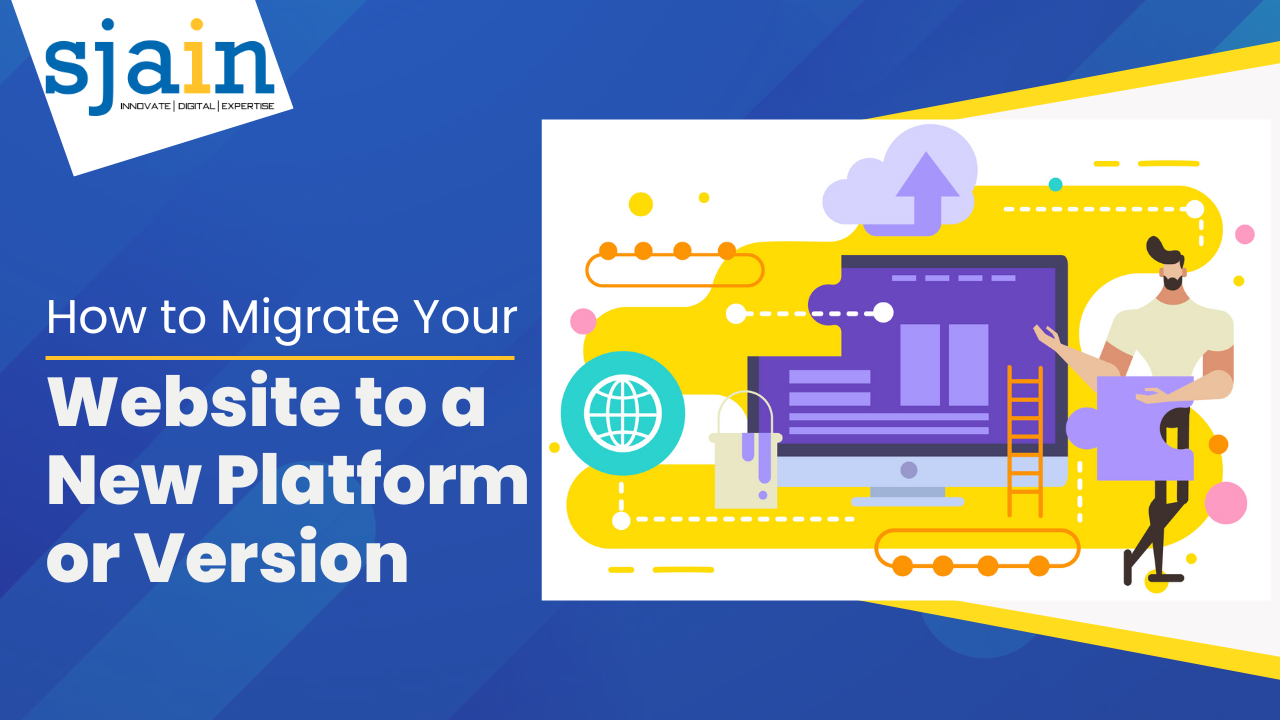How to Migrate Your Website to a New Platform or Version
Migrating a website to a new platform or version can be a daunting task, especially if you’ve never done it before. It involves moving all the data, files, and content from one platform to another while ensuring that everything is intact and functional. The process requires careful planning, execution, and testing to ensure that everything runs smoothly.
If you’re considering migrating your website to a new platform or version, then you’re in the right place. In this article, we’ll take you through the steps you need to take to ensure a successful website migration.
Migrating a website can be overwhelming, but with the right guidance, you can do it like a pro. In this article, we’ll show you how to migrate your website to a new platform or version without losing any data or traffic.
How to Migrate Your Website to a New Platform or Version Assess Your Current Website
Before you begin the migration process, you need to assess your current website thoroughly. You need to identify what’s working and what’s not, what you want to keep, and what needs to go. This step is crucial as it will help you determine the scope of the migration and what needs to be done.
Some of the things you need to consider when assessing your current website include:
Website Content
Take stock of all your website content, including pages, blog posts, images, and videos. Determine what content is relevant and what needs to be updated or removed.
Website Functionality
Check your website’s functionality and identify any features that are not working correctly or need to be improved.
Traffic
Analyze your website traffic using tools like Google Analytics to determine the sources of traffic, the most popular pages, and the devices used to access your website.
SEO
Check your website’s search engine optimization to identify any issues that need to be addressed. This step is crucial as it will help you retain your website’s search engine ranking after the migration.
Choose a New Platform or Version
Once you’ve assessed your current website, it’s time to choose a new platform or version to migrate to. There are many platforms available, and choosing the right one will depend on your website’s needs, budget, and technical expertise.
Some Popular Website Platforms Include:
WordPress
WordPress is the most popular content management system (CMS) and is ideal for websites of all sizes. It’s easy to use, highly customizable and has a vast range of plugins and themes available.
Shopify
Shopify is an e-commerce platform designed for online stores. It’s easy to use, highly scalable and has many built-in features for managing products, orders, and payments.
Magento
Magento is another e-commerce platform that is highly customizable and ideal for large online stores. It has many advanced features, but it requires a higher level of technical expertise.
Squarespace
Squarespace is a website builder that’s ideal for small businesses and individuals. It’s easy to use, highly customizable and has many built-in features.
Create a Migration Plan
Before you start the migration process, you need to create a migration plan that outlines the steps you need to take and the timeline for completing them. Your migration plan should include:
A list of tasks
Create a list of tasks that need to be completed, including backing up your website, installing the new platform, and migrating your content.
A Timeline
Set a timeline for completing each task, including testing and troubleshooting.
A Contingency Plan
Create a contingency plan in case things don’t go as planned. This should include a plan for rolling back to your old website in case of any issues.
Backup Your Website
Before you start the migration process, it’s essential to back up your current website to avoid losing any data or content during the migration. There are many backup tools available, and you can choose one that’s compatible with your current platform.
Some of the popular backup tools include:
BackupBuddy
BackupBuddy is a popular backup plugin for WordPress that makes it easy to backup, restore and migrate your WordPress site.
Duplicator
Duplicator is another popular WordPress plugin that allows you to create a backup of your website and move it to a new location.
UpdraftPlus
UpdraftPlus is a popular backup plugin for WordPress that allows you to back up and restore your website to a new location.
cPanel
If your website is hosted on a cPanel server, you can use the built-in backup tool to create a full backup of your website.
Once you’ve backed up your website, it’s time to install the new platform or version.
Install the New Platform or Version
Installing the new platform or version will depend on the platform you’ve chosen. Some platforms require manual installation, while others can be installed automatically using a one-click installer.
If you’re using WordPress, you can install the new platform by following these steps:
Download the latest version of WordPress from the official website.
Log in to your website’s hosting control panel.
Click on the “File Manager” icon and navigate to the root directory of your website.
Upload the WordPress files to the root directory of your website.
Create a new MySQL database and user.
Navigate to your website’s domain name and follow the on-screen instructions to complete the installation.
If you’re using another platform, you can refer to the platform’s documentation for installation instructions.
Migrate Your Content
Once you’ve installed the new platform or version, it’s time to migrate your content to the new website. The process will depend on the platform you’ve chosen and the amount of content you have.
If you’re using WordPress, you can migrate your content by following these steps:
Install a migration plugin like All-in-One WP Migration or WP Migrate DB.
Export your content from your old website using the migration plugin.
Import your content to your new website using the same migration plugin.
Test your website to ensure that all your content is intact.
If you’re using another platform, you can refer to the platform’s documentation for migration instructions.
Test Your Website
Testing your website after the migration is crucial to ensure that everything is working correctly. You should test your website’s functionality, design, content, and SEO to ensure that everything is intact.
You can use tools like Google Analytics and Google Search Console to test your website’s traffic and search engine ranking. You can also use website testing tools like GTmetrix, Pingdom, and Google PageSpeed Insights to test your website’s speed and performance.
Launch Your New Website
Once you’ve tested your website and confirmed that everything is working correctly, it’s time to launch your new website. You should inform your website visitors, customers, and subscribers about the migration and any changes to your website.
You should also update your website’s DNS settings to point to the new website, and update any third-party integrations like Google Analytics and social media accounts.
Conclusion
Migrating a website to a new platform or version can be challenging, but with the right guidance, you can do it like a pro. You need to assess your current website, choose a new platform, create a migration plan, back up your website, install the new platform, migrate your content, test your website, and launch your new website. Following these steps will ensure that your new website is fully functional, secure, and optimized for search engines.
Remember to inform your website visitors about the migration and any changes to your website. You can use tools like email marketing, social media, and website notifications to keep your visitors informed.

